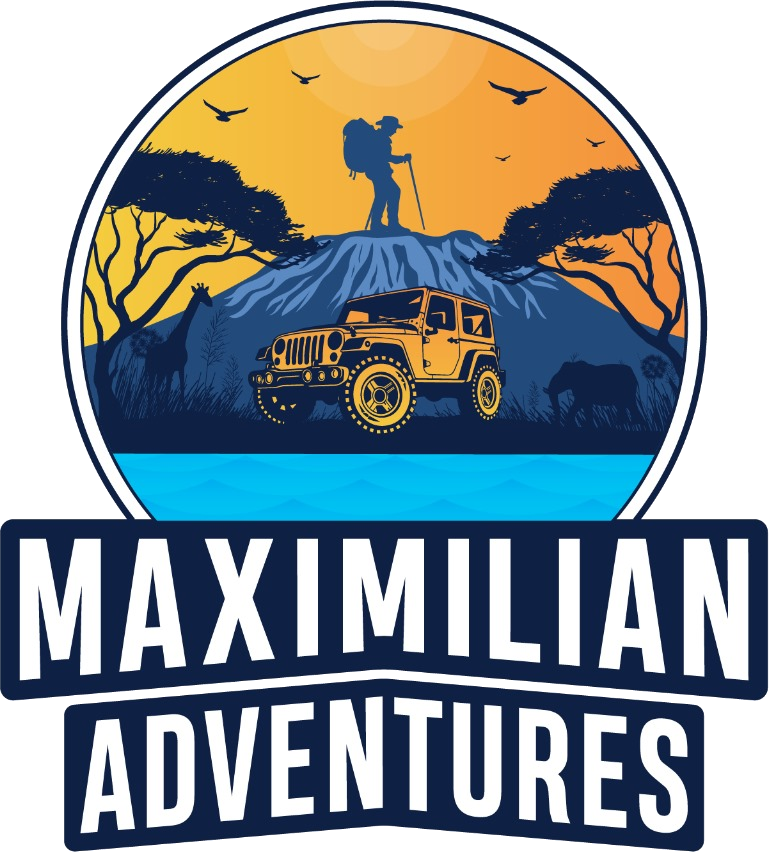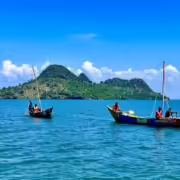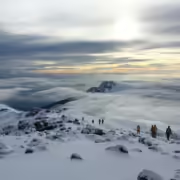
Is the Ngorongoro Conservation Area a Must-Visit Place in Tanzania?
Tanzania is a dream destination for many travelers, renowned for its stunning landscapes, diverse wildlife, and rich cultural heritage. Among its numerous attractions, the Ngorongoro Conservation Area stands out as a highlight. But the question remains: is it a must-visit place in Tanzania? Let’s explore why the Ngorongoro Conservation Area should be at the top of your travel itinerary.
Overview of the Ngorongoro Conservation Area
The Ngorongoro Conservation Area (NCA) in northern Tanzania is a UNESCO World Heritage Site, covering about 8,292 square kilometers. It’s a unique blend of wildlife conservation and the traditional Maasai lifestyle. At its core is the Ngorongoro Crater, the world’s largest inactive volcanic caldera, offering a rich habitat for diverse flora and fauna.
The NCA is renowned for its dense wildlife populations, including the iconic Big Five. Visitors are treated to stunning landscapes, majestic mountains, and the breathtaking sight of the world’s largest unbroken caldera. With its captivating natural beauty and rich biodiversity, the Ngorongoro Conservation Area promises an unforgettable experience for all who visit.


Wonders of the Ngorongoro Conservation Area
The most popular attractions in the area include:
1. Ngorongoro crater


The Ngorongoro Crater, Earth’s biggest intact volcanic caldera, took shape roughly 2.5 million years ago. This occurred when a colossal volcano, almost as large as today’s Mount Kilimanjaro, erupted and then collapsed due to tectonic shifts. Today, it remains the primary attraction of the Ngorongoro Conservation Area.
The crater covers nearly 260 square kilometers and is home to over 25,000 animals, including the Big Five: elephants, buffaloes, rhinos, lions, and leopards. Visitors can also spot hippos, hyenas, warthogs, zebras, elands, gazelles, and wildebeests. Its rich biodiversity and breathtaking landscapes make it a must-see destination, often considered one of Africa’s Seven Natural Wonders.
2. Olduvai Gorge


Olduvai Gorge is a crucial spot for studying ancient humans. It contains the oldest proof of our early ancestors. Scientists have found many ancient bones and stone tools there, some dating back millions of years. This suggests that Africa might be where humans first began evolving.
Here, you can explore the Olduvai Museum, which showcases numerous fossils, stone tools, and skeletons of our hominid ancestors. This site provides crucial insights into human evolution and is a fascinating stop for history enthusiasts.
3. Empakai crater


Empakaai Crater is a smaller but equally stunning volcanic caldera, featuring a deep alkaline lake that occupies about 75% of its floor and is about 85 meters deep. Visitors can enjoy spectacular views of Mount Lengai, Mount Kilimanjaro, and the Great Rift Valley from the crater’s rim. The crater is a haven for wildlife, including bearded vultures, augur buzzards, blue monkeys, bushbucks, and buffaloes. Hiking down to the lake and exploring the surrounding dense rainforest offers a serene and immersive nature experience.
4. Endoro waterfalls


Located on the southern border of the Ngorongoro Conservation Area, Endoro Waterfalls is a beautiful site accessible via a moderate hike through the forest and the Elephant Caves. The hike provides stunning views of Karatu town and the surrounding highlands. The area is also rich in birdlife and larger wildlife like elephants, buffaloes, and bush pigs.
5. Olmoti crater
Olmoti Crater is a shallow, sunken caldera covered with grasslands and bisected by a river valley, providing a year-round water supply and grazing pastures for wildlife. The crater is about 6.5 kilometers in diameter and offers spectacular views, especially from the vantage points overlooking Munge Waterfall. Visitors can enjoy a pleasant stroll through the forest to the crater rim and then descend to the crater floor to explore varieties of plants and wild species.
6. Laetoli footprints
Laetoli is one of Africa’s most important paleontological sites, located on the southern edge of the Serengeti Plains. The site contains a long series of ancient footprints made by early human ancestors, known as Australopithecus afarensis, dating back approximately 3.6 million years. The footprint trail stretches over a considerable distance and features approximately 70 impressions. The Olduvai Museum houses replicas of these footprints, offering a glimpse into our distant past.
7. Ndutu plains


The Ndutu Plains, located on the western side of the Ngorongoro Conservation Area, are a haven for wildlife, especially during the Great Migration. This region is renowned for the seasonal movement of wildebeest and zebras. During the calving season, Ndutu becomes a bustling hub with a multitude of newborn animals. Alongside wildebeest and zebras, Ndutu hosts a diverse array of wildlife including giraffes, impalas, elephants, lions, cheetahs, leopards, hyenas, bat-eared foxes, genets, jackals, wildcats and many more. It stands out as an exceptional location for game viewing throughout the year.
Adventure opportunities




Game drive
The Ngorongoro Conservation Area is an ideal destination for game drives. Popular spots include the Ngorongoro Crater, Ndutu Plains, Sale Plains, Gol Mountains, Nasera Rock, Embulbul, and Olkarien Gorge. Each destination offers unique wildlife viewing opportunities.
Walking safaris
Walking safaris in the Ngorongoro Conservation Area offer an intimate connection with nature. You can explore extinct volcanoes, diverse landscapes, and wildlife, and meet local Maasai, Datoga, and Hadzabe communities. Popular walking destinations include the Ngorongoro Crater rim, Empakaai Crater, Olmoti Crater, and more. All walking activities require an armed ranger and prior booking.
Archaeological tours
The Ngorongoro Conservation Area is rich in archaeological sites such as Olduvai Gorge, Laetoli Footprints, Engaresero Footprints, Mumba Caves, and Engaruka. These sites offer opportunities for learning and researching human history, with preserved materials and fascinating prehistoric remains.
Cultural tours
Cultural tours provide insights into the lifestyles of the Maasai, Datoga, and Hadzabe tribes. Visiting designated Maasai Bomas allows you to learn about their culture, take photos, and purchase souvenirs. The Hadzabe Tribe, hunter-gatherers residing near Lake Eyasi, offer a unique cultural experience.
Botanical tours
The Ngorongoro Conservation Area is home to hundreds of flora species, making it a prime location for botanical tours. These tours offer educational insights into global environmental changes and conservation issues, showcasing the area’s diverse plant life.
Bird watching
With over 550 bird species, the Ngorongoro Conservation Area is a bird watcher’s paradise. Its diverse vegetation and topography provide habitats for a wide range of birdlife. During the wet months, Eurasian migrants like white storks, yellow wagtails, and swallows join local species such as flamingos, stilts, saddle-billed storks, ibises, and various ducks. Lake Magadi often hosts thousands of lesser flamingos and other water birds. The forests are home to turacos and hornbills, while raptors and scavengers are common on the plains. Grassland birds like ostriches, kori bustards, and crowned cranes are frequently spotted.
Photographic safaris
Photographic safaris in the Ngorongoro Conservation Area offer endless opportunities to capture stunning landscapes, wildlife, and cultural sites. Photographers are advised to bring all necessary equipment and adhere to guidelines for photographing local communities.
Camping safaris
Camping in the area allows you to experience the spectacular vistas of the Ngorongoro Caldera. Simba A is the most famous campsite, offering amenities like Wi-Fi, hot showers, and dining halls. Special campsites are also available for self-contained safari operations.
Horse riding
Horse riding safaris provide a unique way to explore the NCA. Led by qualified guides and accompanied by game rangers, these safaris offer an immersive experience in the wilderness, covering areas like Nasera Rock and Olkarien Gorge.
Biking
Mountain biking tours start from Irkeepus village and head towards the Empakaai Crater rim. Along the way, you can enjoy the area’s natural beauty, including Munge Waterfall, Embulbul depression, and Mount Lolmalasin.
Balloon safaris
Hot air balloon safaris over the Ngorongoro plains offer a breathtaking way to see the area’s landscapes and wildlife. These safaris, organized by private tour operators, provide a unique perspective and are a highlight for many visitors.
Bush dining
Bush dining is a must-do activity, offering the chance to enjoy meals surrounded by the wild sounds and scenery of the Ngorongoro Conservation Area. Special picnic areas can be reserved in advance for this unique dining experience.
Conclusion
The Ngorongoro Conservation Area is a must-visit destination for anyone traveling to Tanzania. Its diverse landscapes, rich history, and abundant wildlife offer an unparalleled experience that will leave you with lasting memories. Whether you’re exploring the depths of the Ngorongoro Crater, walking in the footsteps of early humans at Laetoli, or witnessing the spectacle of the Great Migration on the Ndutu Plains, this conservation area promises an adventure of a lifetime. Don’t miss the chance to discover one of Africa’s most remarkable natural wonders.
Your African Safari Awaits
Ready to embark on an adventure to the Ngorongoro Conservation Area? At Maximilian Adventures, we specialize in creating unforgettable safari experiences. Our expert guides, comfortable facilities, and tailored tours ensure that your trip to this remarkable destination is enjoyable and memorable.
Explore our range of tours and start planning your Ngorongoro adventure today!
FAQs
How was the Ngorongoro Crater formed?
The Ngorongoro Crater was formed millions of years ago through volcanic activity. It is the result of a massive volcano that collapsed on itself, creating the unique caldera shape we see today.
When is the best time to visit Ngorongoro Crater?
The Ngorongoro Crater can be visited year-round, but the dry season (from June to October) is generally considered the best time for wildlife viewing. During this time, animals congregate around water sources, making them easier to spot.
How can Maximilian Adventures help me plan my African safari?
Maximilian Adventures specializes in creating tailored safari experiences to destinations like the Ngorongoro Conservation Area. With expert guides and comfortable facilities, we ensure that your safari is enjoyable, memorable, and hassle-free.
Recent Posts
Why Lake Victoria in Tanzania is a Must-Visit Destination
An Adventurer’s Guide to Sports in Tanzania
Kilimanjaro Difficulty Level: What Every Climber Should Know

Safari




